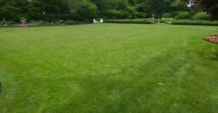By: Scott Eckert, County Extension Agent, Horticulture
Have you ever seen hackberry nipple gall or oak leaf vein gall. I have been seeing many samples this spring of some of these odd growths on leaves and branches of trees. Certain midge flies, mites and wasps cause plant tissues to form abnormal growths or galls. Galls have distinctive shapes and occupy specific sites such as leaves, twigs and bark. Each gall is unique to a specific host genus. There are more types
of galls found on oak trees than any other plant group. Galls normally do not affect tree health.
Although many insects or mites can be specifically identified by the unique galls, little is known regarding most of their life cycles. Thus, the timing for applying spray treatments is imprecise for most gall-formers. Roughly speaking, gallforming insects and mites are active when leaves are unfurling and expanding. Therefore, treatment applications at this time might kill gall forming insects and mites. Spray treatments after galls have been formed and noticed would be of little use.
Pruning out stem and twig galls, where practical, may result in reducing the
numbers of future galls.




